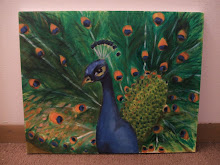The following is my chart from the excerize. I decided to put the categories in order of what is the most important to least important in terms of building my identity.
1. familty-- sister: Ellen is my best friend and one of the strongest people I know. She inspires me to be myself and ignore the pressures in life that might try to change that. She makes me laugh and I love her so much.
1. familty-- sister: Ellen is my best friend and one of the strongest people I know. She inspires me to be myself and ignore the pressures in life that might try to change that. She makes me laugh and I love her so much.
2. gender-- female: I am proud of being a woman and I try to embrace my feminine qualities. All my role models (except my dad) have been female and that is what makes this important.
3. sexual orientation-- straight: I strongly believe love is love and I am open to all orientations but mine defines my identity because my boy friend plays a huge role in my life and like my sister he inspires me to be who I am. This keeps me going and makes me who I am
4. preferred leisure activity--art!: My artistic self makes me confident, creative, challenged, and happy and I am lucky enough for it to be my career too!
5. state of health--healthy: In the last few years I have realized how lucky I am to be so healthy and know that this does not limit what I love to do.
6. Education--UI and LT: Through out all my schooling I have been given an amazing about of information that challenges me and brings out my organizational, and dedicated side. It has taught me to be disciplined and driven.
7. Economic status--Middle class: Being middle class has allowed to purse my goals and allowed me to go to Iowa to study art education. It has taught me that I have to work for what I want however we were never hurting financially while I was learning this lesson.
8. Neighborhood-- Suburban: I loved growing up in the suburbs of Chicago. I grew up naive but I had a great childhood with no fear of my surroundings. It had great school systems and I made great friendships there.
9. Nationhood--American: Being American has given me freedom, pride, and opportunity. Many people may disagree but I am proud to be an American and include this in the make up of my identity.
10. Race-white: I am still learning how this has effected my identity but I am aware that being white has given me a certain privilege.
11. religious affliation--UCC congrationalist: This has given me the moral foundings that shape my identity.
12. political belief--moderate/liberal: I have to admit I am not as involved in politics as I should be but I am VERY liberal on social issues and this shapes my relationships with people.
